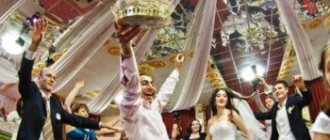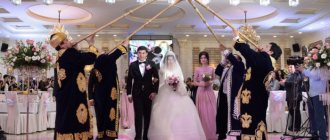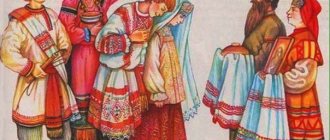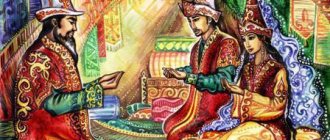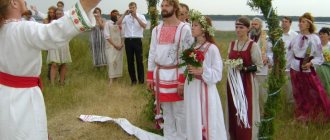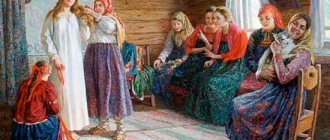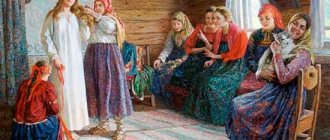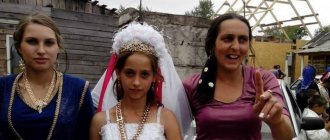Traditions and culture of Ireland
The Irish are probably the most hospitable and friendly people in the world. Any guest is like a brother to them. And if you are not from the UK, then you can safely contact the residents with any request or question. They have a certain hostility and distrust towards the British. Apparently, the time of English rule in Irish lands did not pass without a trace.
The traditions of Ireland are carefully protected by the inhabitants. They love and honor them, and proudly tell guests of the country about them. Dancing occupies a special place in their lives. The Irish dance everywhere. They love noisy feasts and celebrate any celebrations on a grand scale. At any holiday you can see their national dance, where they move their legs very quickly and energetically.
Another favorite tradition in Ireland is fairs. As soon as it starts, the fun takes over the whole city. Magicians, musicians, actors, and acrobats entertain people from morning to evening. The fun and noisy festivities do not end until late at night.
Another custom among the Irish people relates to the New Year. On the eve of the holiday, the doors of each house remain open so that anyone who comes to visit can feel at home.
By the way, the custom when the birthday boy treats guests is fundamentally different from ours. Here everything is the other way around. These are guests and friends vying with each other to treat the hero of the occasion.
In a conversation with an Irishman, you can raise any topic except religion and political relations with England.
Another noteworthy point is that the Irish do not really like physical contact. You should not rush towards them with hugs. This is only appropriate for football or some kind of global celebrations.
Advice for young people
But the greatest impression on the guests and the newlyweds themselves will be made by their performance of the wedding dance , which the newlyweds must prepare in advance.
The newlyweds should also ensure that each guest receives a boutonniere made in the style of the bride's bouquet. This will add solemnity and create a special romantic mood at the ceremony.
In order for the newlyweds to have a happy life, they need to believe in the wonderful Irish signs and follow them during the ceremony:
- do not hold a wedding on Saturday;
- do not perform the ritual of breaking glasses;
- on the day of the ceremony, the bride should look at the sun so that the newlyweds have beautiful children;
- The groom should be the first to congratulate his bride on her wedding, so that their life together will be long and happy.
National Costume
The national costume of an Irish man is considered to be a checkered kilt, cloak or sweater. However, these robes have undergone significant changes over time. No one will definitely remember the real Irish national costume. After all, its history begins somewhere in the 6-7th century. Then these were very simple clothes: a long linen shirt and a woolen cloak, always with a large hood.
Nevertheless, there were still decorations, but only among the rich segment of the population. As a rule, they consisted of embroidering the outer tunic. It was by this that one could distinguish the rich from the poor and even determine the scope of a person’s activity.
Today's costumes have become heavily Europeanized. Pants, sweaters appeared, and skirts were shortened. Women's dresses are decorated with ethnic patterns, and the kilt is predominantly checkered. The main color of clothes (and not only) is green. Additional colors are white and orange.
Selecting colors for decoration
The green palette is associated with living nature, it is a symbol of youth, a vibrant active life, it gives a great mood and a surge of vitality. But green is not the only color present in Irish wedding decorations. It can be combined with a wide variety of colors and decorate the hall, tables, sew costumes using:
- white;
- golden;
- black;
- gray;
- yellow;
- blue flowers.
Two other common colors in Ireland are red and orange. Therefore, future spouses have a fairly wide choice to create a bright and sunny holiday that will suit the tastes of the guests of the celebration.
See how unusual brides and guests are during an Irish-style wedding, photo below:
Culinary preferences
Everything about the kitchen is very simple and no frills. You could even say that the cuisine of Ireland is the Irish themselves. Simple, unpretentious. And, of course, delicious. Particular preference is given to potatoes and meat. This includes stew, colcannon, champ, fudge, Guinness pie, pickled herring, tea, beer and real Irish whiskey.
You don't necessarily need to go to a restaurant to have a good meal. Delicious food everywhere. Even in an ordinary pub you can be served freshly baked bread and black pudding. But don’t think that if the dishes are simple, they won’t taste good. This is a big misconception.
Photos of wedding decoration in Irish style
Irish weddings are enchanting and breathtaking. It's like immersing yourself in a fairy tale. Below are ideas for wedding decorations in Irish style.
St.Patrick 's Day
A special day for Irish culture is March 17th. Everything around is transformed, taking on a solid green color. People, clothes, jewelry, decorations, and even beer turn green.
St. Patrick's Day - what kind of holiday is this? This state celebration marks the arrival of spring and is considered the most important and important in Ireland.
Residents of the country make careful preparations to fully enjoy the relaxation and fun on this day. It is accompanied by carnivals, fairs, feasts, music and dancing. Although before everything was a little different. The townspeople went to church for mass, celebrating the holiday more calmly.
Steps to the wedding
Before the newlyweds walk down the aisle, it is customary in Ireland to perform an engagement ceremony. In many other countries, engagement is a purely symbolic moment before the wedding, a relic of the past.
Irish wedding rituals are strictly observed and engagement is one of them. Lovers must be friends in the literal sense of the word for up to two years. And only then, step by step, they begin preparing for the wedding.
- Matchmaking and dinner after it. The parents of the newlyweds and the newlyweds themselves meet in the bride's house. The priest and relatives are also invited there. Be sure to roast the goose - as a sign that the groom has already been “plucked”, that is, he has tidied up his hands.
- After agreements have been reached, the wedding date is set. The best day is considered St. Patrick's Day - March 17th. April is also considered favorable. The autumn harvest months are the worst for weddings, according to Irish customs.
- Until the wedding day, the bride's parents have the right to come to the groom's house at any time and see how they will be received.
- Likewise, young people should not be left alone. The groom's brother and other relative are always sent with them.
KNOWLEDGE BASE: A wedding bouquet of sweets is like a real art, subject to everyone
Invitations are sent to guests in advance, indicating the date and time of the holiday. Wedding invitations are usually made in white and green colors. To create the desired mood, add pictures of a shamrock - a symbol of Ireland, or comic images of a leprechaun - a gnome guarding a pot of gold. Also a symbol of fun in Ireland is the violin, the Celtic harp. They are also fashionable to use for invitations.
The wedding venue is an open-air area with a lot of greenery and trees.
This is interesting: Who had the worst handwriting
Irish wedding traditions and signs
“Wedding in April, joy for the maiden and the lad,” so says an old Irish poem. An Irish wedding is a huge number of traditions, rituals, and signs, the possibilities of which are of course difficult to use to your advantage. But if young people make the effort, they can celebrate their wedding in Irish style, starting with pre-wedding parties.
Aytin Gusak
An ancient and slightly strange custom, “Aitin Gusak”, when the prospective groom is invited to the bride’s house before the wedding and a goose is prepared in his honor. Nowadays, the expression “his goose is cooked!” has been preserved, a hint that the guy was caught in the net. In the old days, when the matchmaker managed to come to an agreement and resolve all issues with both parties, the young man had to meet his future wife. The girl's family was cooking goose. The general idea of the holiday is to get to know young people as best as possible. Everyone who will be present at the wedding ceremony, including the priest, was also invited. After the feast there could be dancing, but most importantly, there were opportunities to influence the “gander” and set certain conditions for him. Another characteristic of the same custom is “plucking the gander”; the name also remains a common noun. When family members discussed the details of family life with the blushing bride, while plucking the bird.
After Aitin Husak, both families gathered to formalize a contract (or agreement) on a marriage alliance, very often quite complex. For example, the mother and father of the bride could include many clauses according to which, when they grow old, the children will have to take into account their needs, accompany them to Sunday Mass, supply the necessary food, heating, milk, butter, eggs, etc.
Although an arranged marriage may not seem like a very romantic event from the heights of our time, the fact is that many of the young people who were going to get married had known each other since childhood and feelings of affection existed between them. There was most likely no romantic or passionate relationship between them, which in the old days in rural Ireland seemed unthinkable. But it is worth paying tribute to the parents of the young people, they did everything possible to ensure that their children were suitable for each other and loved and respected each other in family life.
Time to celebrate
These days, the busy time for matchmaking in Ireland begins immediately after Epiphany (January 6). It is believed that the Irish misinterpreted the mainstream church's instructions, set out in November 1563, prohibiting weddings during Lent. From some reasoning it followed that if it was impossible to get married during Lent, then, therefore, it was necessary to get married earlier. Thus, it was a given to get married during Shrove Tuesday, and the day before Ash Wednesday was considered the most auspicious day.
Most modern weddings are celebrated on Saturday, although even a few decades ago marriages took place in Ireland on any day except Saturday and Sunday. There is an Irish rhyme that illustrates wedding signs associated with good luck in family life, depending on what day the young people choose to exchange vows of love and fidelity to each other.
Monday - for health Tuesday - for wealth Wednesday - the best day Thursday - for losses Friday - for crosses Saturday - not a single day of all!
All the conclusions are very logical, especially considering that Ireland has been a predominantly rural country in the very recent past, and Saturday is the traditional market day when families buy or sell livestock and products produced in households. There is no time for wedding celebrations on weekends! And as far as we know, the Catholic Church was also against weddings on Saturday.
After the union of two hearts was organized thanks to the matchmaker and the parents of the newlyweds, the bride’s parents almost always sent the girl’s younger brother, supposedly to pick flowers when the girl and the boy started dating, but in reality, to make sure that there were no liberties between them that were not yet permitted . Such accompaniments were called “ . ” During pre-wedding walks, it was customary for the bride's parents to come to the groom's house for a “check.” From the way they were met, looked after, treated to food, they drew their own conclusions about how well their daughter would live in her new family.
Images of newlyweds
Traditionally, the color of the bride's dress should be blue, in Ireland it is a symbol of purity and innocence. But you can also use the usual white. It is better to choose an airy dress with a lot of lace; in such a dress the bride will resemble a beautiful forest nymph - a participant in many Irish fairy tales and legends. The bride's hair is usually braided - a symbol of feminine strength and good luck. It would be great if a wreath of wildflowers is worn over the braid. You can weave flowers into a braid. The bride's bouquet is made from the same flowers and wrapped in lace. Complex shapes and exotic plants are not appropriate for an Irish wedding.
The groom at an Irish wedding may wear a classic suit with bright contrasting details. The color of the suit varies depending on the wishes of the newlyweds and the color of the bride's dress; you can choose gray, dark green, blue. Details such as a tie, cufflinks, tie pin, or headdress can be striking. A wildflower boutonniere will complete the Irish-style look. Interesting examples of images can be seen in the photo.
Editor's choice: Wedding at night: popular, romantic, bohemian
Peoples of Ireland: culture and traditions
There are 4.8 million people living in Ireland. Despite their small numbers, the Irish have left a noticeable mark on world culture and science and to this day are one of the most enlightened nations.
The Irish character cannot be called traditionally European. They are open and friendly, do everything on a grand scale, and love noisy feasts. These people will treat the first person they meet as if they were their friend: they will tell you the way, ask about your plans, and at the same time tell you a funny story. Friendliness, responsiveness and a great sense of humor are their main national traits. No wonder in 2010 Publishing house Lonely Planet recognized Ireland as the friendliest country in the world!
Choosing a place to celebrate
The ideal venue will be nature, the natural conditions of which will only emphasize the theme of the wedding. If the wedding is planned to be held indoors, you should think about additional themed decor.
For example, balloons in two or three thematic shades, green and white hearts, and green bows on seat covers would fit perfectly into a wedding. A green four-leaf clover can be added to any wedding as a symbol of good luck, perfectly matching the color scheme. Tablecloths for tables can be chosen in both green and white shades with thematic additions.
Population of Ireland
The indigenous people of Ireland are descended from the Celtic Gaelic tribes who moved here in the 5th century BC. In the 8th century, the Vikings came to the territory of the kingdom, founded cities here (including Dublin) and had a huge influence on the formation of the nation. The Irish are distinguished by red hair, blue eyes, tall stature and a thick build. And in their character one can trace the traits of their warlike ancestors: directness, perseverance and independence.
Today, Ireland is a multinational state, the basis of which is the Irish (90%). The more than 40 other nationalities include British (2.7%), EU (about 4%) and Asian and African immigrants.
Most residents are Catholics. The national languages are English and Irish, the study of which is given attention at the state level.
Culture and life of the peoples of Ireland.
Irish literature is considered the third oldest in Europe (after Greek and Roman). Its founder is Saint Patrick, who wrote the Confessions in Latin. Three Irishmen have received the Nobel Prize in Literature. Residents of this country love to read books, and many write poetry and publish them in local magazines.
Architectural monuments include Irish dolmens (ancient stone structures), ancient fortresses, Gothic-style buildings (Christ Cathedral in Dublin) and classical manors from the time of English rule. Commoners lived in adobe or stone one-story houses with a hearth, which was considered the “heart of the house.” Songs and folk tales were dedicated to him. Modern Irish people prefer to live in brick houses without any special frills. The only decoration is the bright multi-colored doors, which are the hallmark of Ireland.
The main highlight of Irish culture is folk music and dancing. Irish "solo dancing" with energetic footwork is famous throughout the world. In Ireland itself, dance shows are so popular that you can watch them in ordinary pubs and drink a glass of beer here.
Natural stone walls
Wherever you are - from the Greek islands to the Chinese mountains - everywhere you can see stone walls , which seem to be part of the earth itself. They serve as a symbol of the ancient philosophy of “use what you have.” Like the structures of antiquity, stones perform aesthetic and practical functions. In addition, stone is an environmentally friendly material, more resistant to external influences than concrete. Dry stonework also promotes plant growth and improves the microflora of the garden.
